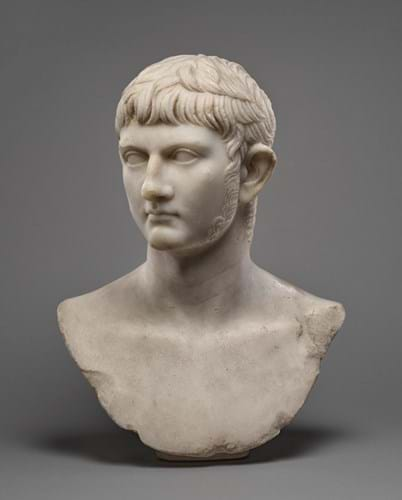The bust was part of the collection of the Earls of Elgin and Kincardine for many years and having been acquired in Rome in around 1798 by Thomas Bruce, 7th Earl of Elgin (1766-1841) – he of the ‘Elgin Marbles’ fame.
It stayed with Elgin’s heirs at Broomhall House in Scotland until it was sold at Sotheby’s New York in December 2012, where it fetched a premium-inclusive $8.15m (£5.07m), selling to a private collector.
Back then, the Sotheby’s catalogue stated that the 20.5in (52cm) high bust was probably among the marbles that Lord Elgin had instructed his private secretary William Robert Hamilton to buy on his behalf shortly before his departure for Constantinople to become British Ambassador to the Sultan.
‘Depositio barbae’
Germanicus Julius Caesar (15BC–19AD) was the son of Nero Claudius Drusus and Antonia the Younger but was adopted by his paternal uncle Tiberius in 4AD. A successful general known for his campaigns in Germania, he was popular with both the military and Roman citizenry and was being groomed to be emperor. However, he never ascended to the throne due to his death aged 33, five years into Tiberus’ reign.
The circumstances of his death have long been deemed suspicious and may be linked to his recall of Gnaeus Calpurnius Piso, the governor of Syria. Following his death, Germanicus received extensive posthumous honors decreed by the senate and was venerated as Rome’s version of Alexander the Great – inspiring sculptures to be created of him such as this example.
The bust depicts the young Germanicus before the depositio barbae, the Roman ritual of the first shaving of the beard. While the image, or portrait type, was created at the time of his adoption, this bust was a posthumous portrait of Germanicus.
Ten copies are known today of the so-called ‘Germanicus adoption type’ portrait, all of them identified by the facial features and careful arrangement of the locks of hair over the forehead.
The bust will now join the Getty’s collection of Roman portrait sculpture which also includes busts of Germanicus’ grandmother, Octavia Minor; the chalcedony bust of his mother, Antonia Minor; the marble portraits of his son, Caligula, and his daughter, Agrippina the Younger; as well as marble heads of his paternal uncle and adoptive father, Tiberius, and his great uncle, Augustus.
Director of the Getty Museum Timothy Potts said: “This stunning portrait bust adds an extraordinary sculpture to the Getty’s collection of Roman portraits. It is among the finest and best-preserved portraits of the young Germanicus at the time of his adoption in 4AD by his uncle, the soon-to-be Roman emperor Tiberius and complements nicely other Roman busts in our antiquities collection.”






